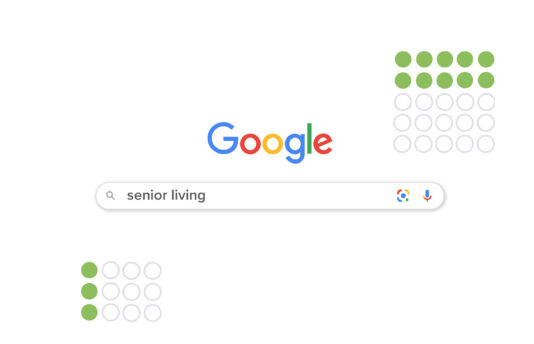Tailoring Your Content Marketing to Different Generations
How do people choose a product or service? Different generations have distinct considerations and preferences, and understanding these generational differences is crucial for businesses aiming to attract new consumers and foster customer loyalty.
Members of the Silent Generation, Baby Boomers, Gen Xers, Millennials and Gen Zers consider a variety of factors when choosing their products and services. By recognizing their unique characteristics and preferences, businesses can tailor their messaging and marketing efforts to effectively reach and engage each generation in their consumer journey. So, are you developing the right message in the right place for each?

The Silent Generation
(Born Up to 1945)
Influences: Trust & Tradition
Given that this generation’s youth was influenced by the Great Depression, they’re used to being frugal. They are both price and value conscious and want to be directed to the right product. So it makes sense that, according to a Jungle Scout survey, 41% read online reviews before making a purchase.
This generation also has rigid definitions of service, believing “the customer is always right.” This is because they are loyal when it comes to the places they choose to spend their money, and they expect respect and to build a valued relationship with the businesses they frequent.
What does this mean for you? You need to be transparent. Show them up front what they are getting and why it’s the right product for them. You’ll also want to make sure your online reputation is in a great spot.
Technology: Low Engagement
The Silent Generation is known for its lack of use of digital technology. And though the COVID-19 pandemic drove a slight uptick in digital media usage among this group, Pew Research reports that only 40% own smartphones, only 33% own a tablet and only 28% use social media. So, unless a trusted source recommends researching something digitally, this generation will prefer to be reached more traditionally.
Where to Reach the Silent Generation
Prioritizing direct mail, print, broadcast television and radio in your marketing campaigns will be most effective at reaching this generation.

Baby Boomers
(Born Between 1946–1964)
Influences: Reputation & Engagement
Baby Boomers, also known as the “me generation,” like to be right. This leads them to value brand reputation and trustworthiness above all else when it comes to decision-making. In fact, according to Data Axle, they are nearly as likely as Gen Z (41% vs. 42%) to think of a brand’s reputation as “very important.” This makes them likely to choose products and services based on personal recommendations, prior experience and reputation.
Technology: Embracing More
Baby Boomers are more likely than their Silent Generation counterparts to embrace technology. They also tend to research recommendations before deciding. They want to be engaged and use third-party comparisons and ratings as a means of decision-making.
This generation also accounts for more than 50% of the nation’s wealth, holding $78.3 trillion in assets. These deep pockets mean they aren’t necessarily looking for a deal—just something worthwhile to spend their money on.
Where to Reach Baby Boomers
Baby Boomers can often be reached through more traditional measures, like broadcast television and AM/FM radio. But you’ll also find success in reaching them through paid search, YouTube, Facebook, display advertising, digital radio and print.

Gen Xers
(Born Between 1965–1979)
Influences: Information-Seeking
Gen X has been dubbed the “digital immigrants,” since they know the world before and after the technology boom and are responsible for much of it. This generation wants to be educated and informed about their purchases. Gen Xers are more likely to choose a product or service based on their most recent experience.
Technology: Healthy Skepticism
Since this group grew up without the ability to shop online but also amongst the rise of the Internet, they value both the convenience of online shopping as well as the experience of a brick-and-mortar store. This is great news for marketers, as this group is likely to embrace both virtual and in-person deals.
Offer a loyalty program? Even better. This generation is the most likely out of any to rank loyalty or rewards programs as “very important,” with 57% of respondents ranking this factor as such, according to Data Axle. They’re also the least likely after Millennials to value brand reputation, with only 36% of consumers ranking this factor as “very important.”
They also care about the impact their purchases make. A First Insight/Wharton School study found that almost 90% of this generation is willing to spend an extra 10% (or more) for a sustainable product.
Where to Reach Gen Xers
Since this generation strives for convenience due to busy schedules, they tend to prefer email marketing over most other channels. You can also reach them on YouTube, followed closely by Facebook, broadcast television, over-the-top (OTT) TV and AM/FM radio.

Millennials
(Born Between 1980–1994)
Influences: Digital Natives
It’s no secret that Millennials are the most sought-after group when it comes to marketing. And for good reason—they have an annual spending power of $2.5 trillion! And with Millennials being heavily influenced by advertising, making sure your message is in the right place at the right time is especially important.
Technology: Instant Access
This group is made up of early adopters. They’re ready to try your new, groundbreaking product or service that no one has heard of. Even better? They’ll tell their friends and family, with over 70% of the group trusting recommendations from friends and family to influence their buying decisions. But you need to be relevant to them to gain their trust. In fact, Data Axle found that 88% of Millennials want personalized communications from the brands to which they are loyal.
Interestingly, the study also found that this group was the least likely to respond to deals (though 50% still said they were important to them). And, perhaps most importantly for marketers who are just starting out, brand reputation matters the least to this generation out of any, with only 31% of respondents marking this factor as “very important.” What is important is product quality: 72% of Millennials said this was “very important.”
Where to Reach Millennials
Millennials value technology and are likely to seek information from multiple sources. They want to feel connected, but perhaps most importantly, they want to be reached at the bottom of the funnel, when they’re ready to make a decision. Reach these digital natives through YouTube, Facebook, Instagram and email marketing to make the most impact. Though they’re not always prone to interacting with display ads, also consider reaching them where they’re searching, on websites related to your product or service, through programmatic display buys.

Gen Z
(Born 1995–2012)
Influences: Convenience
It’s no secret that Gen Z expects convenience. These consumers have never known a world without the Internet, or without near-constant access to mobile devices and apps. This means that sharing data online, often in many places, comes naturally to them, especially when it leads to a convenient outcome. In fact, over 40% of Gen Zers have exchanged personal information for a discount code or free service, according to a study by McKinsey.
Technology: Highly Engaged
With social media as a preferred form of communication, unsurprisingly, brand reputation is of high value to this audience. Data Axle found that 42% of Gen Zers value brand reputation. But what else is important to them? According to that same study, 65% of Gen Zers said offering deals and sales would help earn their trust.
Where to Reach Gen Z
Gen Z heavily engages with Instagram, TikTok, OTT and YouTube. Providing access to simple in-app forms, click-to-call/schedule technology and any artificial intelligence integration is likely to resonate with them.
How Do Businesses Market to Such Divergent Demographics?
In today’s diverse consumer landscape, catering to the needs and preferences of various generations is paramount when it comes to content marketing. From the Silent Generation’s reliance on direction and traditional communication channels to Gen Z’s demand for convenience and digital engagement, each generation has specific expectations when it comes to selecting products and services. Yet, all generations consider prior experience to be an important factor when choosing to support a business, whether in person or virtually. Providing a positive experience for each interaction is essential.
By recognizing and adapting to these generational differences, businesses or marketing agencies can effectively deliver the right message, foster brand loyalty and remain top-of-mind throughout the consumer journey. Ultimately, understanding the diverse considerations and behaviors across generations allows businesses to offer a positive experience, build trust and create lasting relationships with consumers from every age group.
Download this handy Media Matrix for a quick reference of generational preferences in media consumption.











